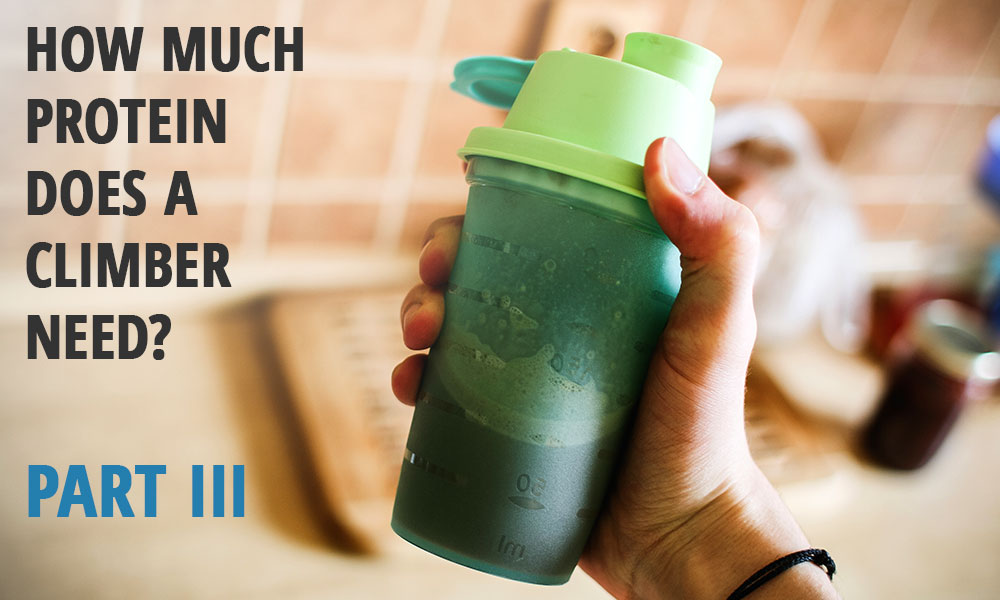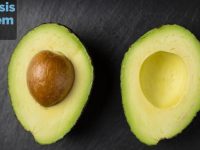In Part I of this series, I discussed a new model of protein intake (20 grams of protein every three hours). In Part II, I addressed some common misunderstandings and misconceptions about protein. If you haven’t read these first two parts, then I recommend you go back and do so now!
In this final part, I’m going to explore the technical details that make me so sure this new model is the ideal one for most athletes, and why it will probably stay mostly intact even if some minor details change.
Quick Recap…
Let’s go over what we know so far:
Numerous studies have shown that our body requires only around 20 grams of high-quality protein in order to maximally stimulate muscle protein synthesis. Amounts greater than 20 grams just increase amino acid oxidation and excretion, meaning that the protein either gets burned for fuel or peed out. We also have a study that suggests separating your protein doses out by around 3 hours gets better results than separating them by either 1.5 hours or 6 hours. Assuming you sleep a normal amount, this leaves room for about six meals spaced three hours apart giving you a total of 120 grams of protein per day.
Despite everything we now, there are still a few gaps. For example, in the study on protein timing 10 gram doses of protein were used for the 1.5-hour pulses and 20 grams for the 3-hour pulses. Since we know it takes 20 grams to maximize muscle protein synthesis, we can logically reason that the 1o gram dose may have performed poorly only because it was inadequate, and hypothesize that perhaps a 20 gram dose every hour would be beneficial.
As logical as the first step is, it’s unlikely that 20 grams every hour would actually be beneficial because of two concepts that have not yet been addressed: the limits of protein absorption, and the refractory period of muscle protein synthesis (refractory is a fancy word for “stubborn”).
How Much Protein Can We Absorb?
All nutrients must be absorbed before they can do anything, and protein is no different. Furthermore, most nutrients are limited in how much can be absorbed in a single sitting. By and large, these limits are helpful—they prevent the body from absorbing more of a nutrient than it needs, and thus help us avoid toxicity—but they can also make it difficult to determine how much of something we need.
(As an off-topic example, consider chromium, which appears to have extremely limited absorption—in any given meal, regardless of total chromium content, only about 0.16 to 0.25 micrograms is absorbed before the transporter is saturated and chromium absorption ceases. The AI of 35 micrograms (for men) and 25 micrograms (for women) reflects average dietary intake, not need in this case, because apparent total daily need could not possibly be greater than about 1 microgram (and is likely far less) based on our ability to absorb. Thus, considering that nearly all food contains at least some chromium, daily absorption is likely constant regardless of whether you get 3 micrograms or 3,000 micrograms.)
Protein absorption gets even more complicated because what we’re really talking about is the speed at which we can break down a protein, which depends on the type of protein in question. Whey protein is broken down rapidly compared to egg protein, and casein is somewhere in-between. Soy protein is a little faster than egg, and pork protein is as fast or faster than whey. No matter the protein, it’s the individual amino acids (and di- and tripeptides) that are released enzymatically from those proteins during digestion that we absorb, not intact proteins, so while we might be able to accurately measure the absorption of a single amino acid, that is almost useless knowledge when it comes to measuring the absorption speed of a complete protein.
The truth is we really don’t know a lot about protein kinetics, or the digestion and absorption of whole proteins, and that’s a major hurdle to leap before we can really make accurate statements about how individual proteins affect muscle protein synthesis. Thus, we can’t really say egg is better than soy, or whey is better than casein, or anything at all beyond that high-quality proteins are better than low-quality ones, and even then we’re making a somewhat qualified statement based on epidemilogical data and not placebo-controlled, double-blind studies.
What we do know, however, is that no protein appears to be absorbed at a rate faster than about 10 grams per hour—and we can deduce a lot from this simple fact. For example, we can state that it’s unlikely a human could absorb more than about 240 grams in a single day (provided they don’t ever sleep). We can also put to bed the hypothesis that 20 grams every hour would outperform 20 grams every three hours since it’s clear we cannot absorb that much at once.
Stubborn Muscles
What about 20 grams every two hours, then? Provided you consume a suitably fast protein, you should (in theory) absorb all the protein from your first dose before the second dose arrives. Here, too, however, we have reason to question whether this would indeed be the case, due this time to an even less well-understood phenomenon known as the “refractory period” for muscle protein synthesis.
Truly, we know very little about the refractoriness of muscle protein synthesis. We don’t really know what causes it, we don’t really know long it lasts, and we don’t really know how to overcome it. All we do know for certain is that our muscles begin to “resist” further muscle protein synthesis after a certain point, and that no matter how much protein we throw at them they refuse to continue until they cool down, so to speak.
One study demonstrated this by using direct infusions of amino acids to maintain a constant elevation in plasma amino acids. Muscle protein synthesis was strongest in studied individuals between 30 minutes and 2 hours, but began returning to baseline levels after two hours until the experiment ceased at six hours. During the entire six hours, plasma amino acids were constant—but the muscles only responded to the increase once.
More than suggesting that we need six hours between infusions to “cool off” (it doesn’t say this at all), this study suggests that we need to let plasma amino acids fall back to normal levels (or at least below peak levels) before muscle protein synthesis can be charged again—and that suggests that we need a period longer than 2 hours between meals in order to let this happen. Even if all the protein from a fast protein meal like a whey protein shake had been absorbed, plasma amino acids would still be elevated at the 2-hour mark, and your muscles may still be in the refractory period.
There is a lot we still don’t know here. Muscle refractoriness hasn’t really been studied in a non-infusion scenario, so we don’t know how it affects whole meals. We don’t know what roles hormones like insulin play in resolving refractoriness, except that it may reduce the refractory period or even be directly (and inversely) correlated. We don’t know what effect (if any) the absorption speed of individual proteins plays on the length of the refractory period. All we can really say is that you should probably space your meals more than two hours apart, but probably need less than six hours of space.
Overall Protein Intake Matters
The reason I throw that last bit in—the “probably less than six hours” part—is because we know one final thing about protein intake, and that is that we can still reasonably say “more is better” when comparing a moderate-protein diet (1.3 g/kg/day) to a high-protein diet (1.6 – 2.0 g/kg/day). For most people, 1.3 grams per kilogram per day is somewhere in the range of 70 to 105 grams of protein, which when spread out into 20 gram doses is approximately three to five meals a day.
Based on what we know from other studies, the best likely explanation for why and how 1.6 grams of protein could beat 1.3 grams is if we find that the refractory period for protein in the context of a normal meal is short enough to allow for six meals a day. At five meals per day, we’d end up with a maximum absorptive potential of 100 grams that is closer to the 1.3 grams per kilogram per day figure shown to be inferior. Therefore, there must be something about a “normal meal” that minimizes the response of the refractory period to only about three to four hours, regardless of protein source and speed (else we would also see significantly better results from people who only consume whey), and this leads us once again to that figure of 120 grams.
Rounding It All Out
So that’s it—that’s where my model for protein comes from. Even if we find out some new technical details in the future, I would be surprised if they do more than slightly modify it. In fact, in order for this model to be overturned in general we would need to see three things:
- New research demonstrating higher absorption rates for most proteins.
- New research demonstrating our 20 gram figure for maximal muscle protein synthesis is too low.
- New research demonstrating the muscle refractory period to be significantly different (either longer or shorter) than how long we think it is.
It’s possible some of these will change, but it’s unlikely such a change will be enormous. More likely, we’ll just see that different scenarios lend different requirements. For example, it may take more protein in a single sitting to boost muscle protein synthesis in the elderly. Or we may find that mixed meals change protein kinetics (though it would probably slow down absorption, not increase it). Maybe the refractory period is an artifact of laboratory conditions (because nobody actually gets their protein through intravenous amino acid infusions) and mostly disappears under normal circumstances.
At any rate, in the meantime the knowledge we do have suggests that there’s no reason to have more than 20 grams of high-quality protein per meal, and that there’s no benefit to eating more than every three hours (at least so far as protein is concerned). It’s just not going to do anything for most people. But it is important insofar as getting the most out of your training is concerned. Yes, you can do nothing more than you’re doing now—and that’s perfectly fine as far as general health goes—but you’re imposing a self-made limit that will ultimately reflect itself in your performance.
That’s all for the protein series. I may write up one final summary piece, but probably not very soon; everything you need to know about my recommendation is right here in Parts I, II, and III. If you do have a question I didn’t address, send me an email.
P.S.: When I make recommendations to individual athletes, I don’t usually insist they get exactly 20 grams per serving, but tell them to aim for 20 to 30 grams per meal from all sources with at least one high-quality source. You can be as precise as you want to be, but it’s time-consuming and probably unnecessary. Nearly all foods contain protein, but not all are high-quality sources; as long as you get most of your protein from a high-quality source, the rest of your meal will fill in whatever gaps remain.















When you post your final article, can you describe what a typical day’s meals might look like? I’m having trouble envisioning how I’m going to get in 20g of protein every three hours without going broke buying protein powder.
It’s true that trying to get 20 g of protein every 3-4 hours can increase one’s reliance on protein shakes (because they’re so simple and convenient), but it’s also possible to use only foods or just to use protein powder to fill in one or two meals. One thing to keep in mind is that 20 g of protein is actually considerably less protein than the typical Westerner eats during a regular meal, which may contain 4+ oz of meat and then protein-containing starches (grains, pseudograins, legumes) and vegetables (not often a major source, but can contribute to the total). As a result, it’s easier to get 20 g with food than some people imagine.
This follow-up article I wrote on the quality of different protein sources doesn’t list protein serving sizes, but does provide a good overview of the myriad options available and provides some additional info on the topic. When I get the chance, I’ll try to write another article on how to get 20 g protein every few hours in a realistic, not overly supplemented way!
Hi Brian,
Thank you for this 3 part article. A lot of useful and relevant information regarding protein consumption.
One aspect you don’t refer in these articles, refers to the 30 minute eating period after working out. I am curious about it, as I always had the habbit of consuming a protein shake right after finishing my work out (arounf the 20 gm you mention).
What have you found regarding this post work-out protein consumption window?
Thank you.
Based on what we know from research, there isn’t really a discrete window after exercise when protein is more effective. Instead, the muscles become more sensitive to protein for at least 24 hours, but upwards of 48 hours, during which protein will have maximal effect. In addition to this, I would add that timing and total amount through your day is more important. If you had protein right before working out and then train for only an hour or two, you’re probably better off waiting another hour or two afterwards to eat more protein. On the other hand, if you haven’t eaten in awhile before training, then having protein soon afterwards would be beneficial. In either case, it really depends more on the rest of your day!
I loved going through this series. As a climber and aerialist I found it to be very informative and helpful. One Question I do have have though is if you have any recommendations for protein sources for a vegetarian that is also soy intolerant. I know I’ve made things fairly difficult for myself haha but my body just does not get along with meat or soy. I find when I am focusing on protein I can come up at around 70 grams in a day, but anymore is such a struggle.
My top recommendation is (non-soy) legumes—actually, I would make this recommendation to anyone regardless of whether they eat meat or soy! A cup and a half (cooked) of most varieties of beans or lentils will provide sufficient protein for a meal outside of any other ingredients that meal may contain. Of course, it might not be feasible to eat that many beans and lentils a day, but even getting two meals a day this way would make a difference.
Beyond legumes, it depends on the specifics of your diet, for example, whether you consume dairy or not. If you do, then milk (or yogurt, etc.) is a good way to supplement the protein content of lower-quality or lower-quantity sources (like quinoa). In other words, you don’t have to get all your protein in a meal from dairy, just about 5-10 grams which would then buoy your meal against any essential amino acids it was lacking, and leucine in particular.
There are also many non-soy protein powders on the market—rice protein, pea protein, all the dairy varieties, etc.—which can be used as a supplement to the rest of your diet. For example, perhaps you find it easy to get about three high-protein meals a day in; adding a fourth high-protein meal in the form of a quick shake (such as before bed) would be easy and wouldn’t otherwise have a large impact on how and what you enjoy eating through the day.
Hope that helps! Also, I don’t know if you’ve seen this article I wrote on protein quality and sources, but it might be helpful!
Thanks so much, these 3 parts give such a good inside into protein intake. I have to say, the comment on increased sensitivity to protein 24 to 48 hours after exercise also helped me a lot! Since I have a busy life, I don’t always have time to exercise every 48 hours. So it seems pointless to still consume a high level of protein if I haven’t exercised for 2 days. Or am I getting this part wrong?